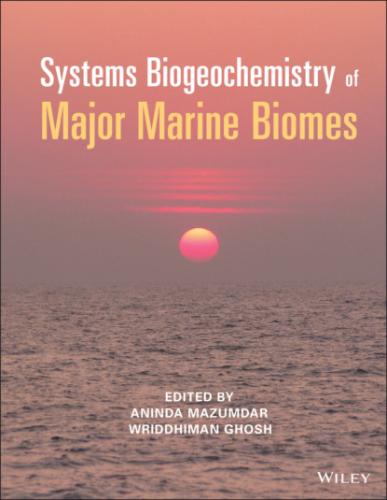CARD‐FISH, catalyzed reporter deposition–fluorescence in situ hybridization; βAOB, Betaproteobacteria ammonia–oxidizing archaea; DNRA, dissimilatory nitrate reduction to ammonia.
Another study, based on the Chilean OMZ water column, also revealed the existence of active sulfide oxidizing bacterial community (SUP05/ARTIC96BD lineage of the gammaproteobacteria) that have a high affinity for sulfide and have the ability to oxidize it at very low concentration (<100 nM) (see Table 1.2 for detailed information; Crowe et al., 2018). This phenomenon indicates that such an anaerobic sulfide oxidizing bacterial community (having high affinity for sulfide) is likely to maintain vanishingly low sulfide concentrations in OMZs water‐column, thereby keeping the S cycling cryptic (rapid oxidation of sulfide into sulfate). Furthermore, another geomicrobiological exploration of ETSP region in sulfide‐poor offshore OMZ waters off the coast of Peru revealed the abundance and activity of sulfide oxidizing–denitrifying bacteria (SUP05, Candidatus Thioglobus autotrophicus, belonging to SUP05 bacterial clade) having a role in driving the S cycling; via the continued oxidation of co‐transported elemental sulfur (Schunck et al., 2013; Callbeck et al., 2018). Considering the present state of information, there was no apparent reason to presume that such sulfide‐based cryptic S cycling would be operational in geographically distinct, nitrite and sulfide rich OMZ water columns with similar geomicrobiological features. In the light of the present topic, notably, a recent study based on two ~3 m long sediment cores (collected from 530 m and 580 m below sea level) located within the pOMZ of the EAS off the west coast of India revealed active tetrathionate‐based biogeochemical S cycling in anoxic marine sediment horizon. It highlighted the role of microbial redox metabolisms in preempting the accumulation of this highly reactive polythionate in sediment pore‐fluids, over and above the known abiotic mechanisms of tetrathionate scavenging by in situ sulfide (Mandal et al., 2020). Notably, in‐depth genome data of SUP05 also revealed that this organism has the genetic potential for the utilization of thiosulfate. Thus, althoughcurrent knowledge highlights the role of sulfide, the role of other intermediate reactive redox species of S cannot be ruled out in the S cycle of the OMZ water column.
1.9. MICROBIOLOGY OF METHANE CYCLING IN THE OXYGEN MINIMUM ZONE WATER COLUMN
High‐resolution water‐column studies revealed the existence of a 300 m thick layer with elevated methane concentrations (20–105 nM) in the anoxic core of ETNP (Chronopoulou et al., 2017). Another geochemical investigation also revealed presence of CH4 in the eastern ETNP water column (Pack et al., 2015) (for concentrations and its oxidation rates see Table 1.2). Several omics‐based investigations revealed the presence of genes (particulate methane monooxygenase: pMMO) and transcripts (16S rRNA and other relevant functional genes) belonging to a unique group of denitrifying methanotrophs in the candidate bacterial division NC10 from Eastern Pacific OMZs
